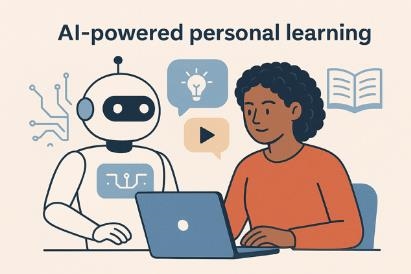Picture a car that does more than just drive you; it *feels* how you feel and changes right away to help you relax or make you feel better. This isn’t a far-off dream; it’s happening now: emotional AI in cars that can tell when a driver is stressed by looking at their face, heart rate, skin response, and small actions. These automobiles make driving safer and more personal by carefully adjusting the music, lighting, temperature, and even the navigation.
Driving can make you feel a lot of different things, including angry when you’re stuck in traffic, nervous when you’re on a road you don’t know, or tired on lengthy trips. These feelings can all effect safety. AI systems today go beyond just watching to become compassionate co-pilots. For example, Jaguar Land Rover’s mood-aware AI can tell how stressed the driver is by looking at their face and then changes the cabin lighting, climate, and playlists to help them relax. Affectiva’s new technologies, on the other hand, look at people’s live emotional states and send out alerts or make small changes to keep people from getting hurt when they are tired or frustrated.
This high level of emotional intelligence depends on **multimodal sensing**: biometric sensors built into seats and seatbelts keep an eye on heart rate and skin conductivity, and cameras record micro-expressions and head movements. Then, the algorithms combine these inputs in a way that lets them correctly identify emotions 96% of the time in test situations. The CarEs approach is different because it customizes “stress factors” to each driver’s style, creating a dynamic, safety-focused cooperation between people and machines. By using these real-time information, AI changes how cars behave to make them more comfortable and less likely to cause accidents, turning them into responsive havens of well-being.
Emotional AI goes beyond safety to offer unmatched customisation. The car becomes a conscious friend, changing music styles to break up boredom or stress, changing the lighting to make you more awake, and finding new routes to avoid traffic jams that are too aggravating. Imagine a stressful ride home made better by soft sounds from nature and dim lighting, or tired moments made better by happy music and brighter lights. It’s like having a friend who is always aware of what you need and is always right on the money.
In the future, cars that can sense emotions will likely work with other smart devices. Devices in the home might change the lighting or make the ambiance more soothing according on how the passengers are feeling. Features that emphasize on wellness, like guided breathing, mindfulness prompts, or virtual reality nature retreats during pauses, could become common, which would be good for mental health on the go. Emotional AI marks a big change toward safer, more emotionally fulfilling travel. It can stop road rage, improve focus, and promote healthy driving practices.
At its foundation, emotional AI changes the close relationship between driver and machine, making cars into smart partners that can sense little changes in mood and respond right away to help people feel better. This big change promises fewer accidents caused by stress and more happiness behind the wheel. As carmakers and tech entrepreneurs improve these smart technologies, the future will bring cars that carry us beyond distance—emotionally connecting with us and turning every drive into a harmonious ballet of human sensations and smart technology.
—
**Important Parts of Emotional AI in Cars:
– **Multimodal Emotion Detection:** Using facial recognition, voice tone analysis, and biosensors that detect heart rate and skin conductance together can find stress, rage, exhaustion, and joy with amazing accuracy.
– **Changing the Cabin Environment:** The system expertly changes the colors and brightness of the lights, regulates the temperature in the cabin, and plays music that fits your mood, whether you want it to be peaceful or invigorating.
– **Personalized Stress Factor Models:** AI systems like CarEs make stress tests based on your own driving behaviors so they can predict and stop dangerous situations before they happen.
– **Alerts and safety measures in real time:** When a driver is more stressed or distracted, they get instant audible or visual cues, which helps lower the chance of accidents.
– **Smart Route Optimization:** Cars offer different routes to avoid traffic jams or emotionally difficult regions, which makes the ride more comfortable and less stressful.
– Putting wellness into practice: Emotional triggers lead to mindfulness exercises, breathing sessions, VR relaxation, or cognitive games during breaks to help mental health.
– **Compatibility with Connected Smart Ecosystem:** Mood detection might work with smart home technologies to automatically change the lighting, temperature, or security of a home based on how the driver is feeling.
By putting emotional intelligence in automobiles, companies are not only coming up with new ideas; they are also changing the way people drive in a big way to make it safer, more comfortable, and more in tune with people’s emotions. This makes travel experiences that really represent the human condition.





